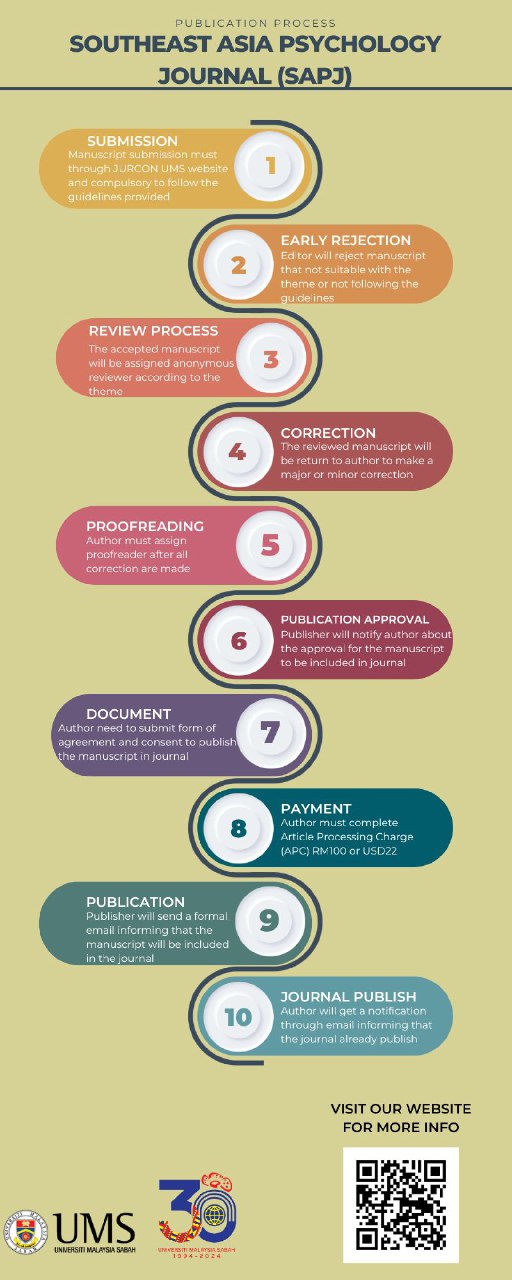LEARNING AGILITY AND LEADERSHIP SKILLS AMONG MOTORCYCLE TIRE COMPANY X EMPLOYEES IN INDONESIA
DOI:
https://doi.org/10.51200/sapj.v8i2.5130Keywords:
Learning Agility, Leadership Skills, & EmployeeAbstract
The objectives of this study were to examine the relationship between learning agility and leadership skills among motorcycle tire company X employees in Indonesia. There were 149 respondents with a minimum position is Team Leader selected through purposive sampling. The instruments of this research consist of 34 items for learning agility (De Meuse, 2015) with α = .868 and 16 items for leadership skills (Katz, 1955) with α = .796. Data analysis uses descriptive statistics and inference analysis. The result showed a positive and significant relationship between learning agility and leadership skills (r = .619, p < .05). It means that the higher the learning agility an employee has, the higher his leadership skills. On the other hand, there is a positive and significant relationship between self-insight and leadership skills (r = .577, p < .05), as well as interpersonal acumen and human skill (r = .541, p < .05).
References
De Meuse, K. P. (2017). Learning agility – Beyond the hype: What science has to say. Retrieve from www.TheTALENTx7.com.
De Meuse, K. P. (2015). Using science to identify future leaders: Part II – The Measurement of https://doi.org/10.13140/RG.2.1.1760.0481
Learning Agility.
De Meuse, K. P. & Hallenbeck, G. (2010). Learning agility: A construct whose time has come. Consulting Psychology Journal Practice and
Research. Vol. 62, No. 2, 119-130. https://doi.org/ 10.1037/a0019988
Dragoni, L., P. E. Tesluk, Russell, J. E. A., & I. Oh. (2009). Understanding Managerial Development: Integrating Developmental Assignments,
Learning Orientation, and Access to Developmental Opportunities in Predicting Managerial Competencies. Academy of Management
Journal 52: 731-743. https://doi.org/10.5465/AMJ.2009.43669936
Dries, N., Vantilborgh, T. & Pepermans, R. G. (2012). The role of learning agility and career variety in the identification and development of
high potential employees. Personal Review 41: 340-358. https://doi.org/10.1108/00483481211212977
Elias, P., McKnight, A. (2001). Skill Measurement in Official Statistics: Recent Developments in the UK and the Rest of Europe. Oxford
Economic Papers, 53(3), Special Issue on Skills Measurement and Economic Analysis, 508-540 and
Ferry, K. (2015). Korn Ferry assessment of leadership potential: Research guide technical manual. Retrieved from http://static.kornferry.com/media/sidebar_downloads/KFALP_Technical_Manual_final.pdf.
Hao, M. J., & Yazdanifard, R. (2015). How effective leadership can facilitate change in organizations through improvement and
innovation. Global Journal of Management and Business Research: A Administration and Management. 15(9).
Holtkamp, M. (2014). Leadership skills and the role of adaptability and creativity in effective leadership: A literature review geared toward
an integrative model. 3rd Bachelor Thesis Conference. University of Twente, Faculty of Management and Governance
Katz, R. L. (1955). Skills of an effective administrator. Harvard Business Review, 33(1), 33–42.
Khan, U. R., Ajaz, F., Khan, A., Khan, S. & Fatima, S. (2016). The role of leadership on organizational change. International Journal of Management Science and Business Research. 5(11).






